The Ultimate Guide to Ace Abstract Reasoning Test ( Part 1 )
Preparing for tests that have abstract reasoning questions can be tough. These questions use shapes, symbols and patterns that require a special way of thinking. But don't worry! Our guide is here to make abstract reasoning easier to understand and give you helpful tips to succeed on the exam.
To do well on abstract reasoning questions, you need to discover the hidden pattern that links the pictures, shapes and symbols. Keep reading to learn more about how to approach these questions and improve your performance on the exam.
Abstract Reasoning Questions and Answers
In this section, we will talk about the important parts of an abstract reasoning question. We will also give a clear explanation of a sample question and its answer to help you understand it better.
Changes in Shape in Abstract Reasoning Test
In abstract reasoning, one type of pattern that you will encounter is how shapes transform. To analyze shape transformations effectively, it's important to break down the whole image into its components. These components include:
Angles: Pay attention to the angles in the shape. Are they increasing or decreasing in size? Are they changing by equal angles?
Sides: Inspect the sides of the shape. Have they become longer, shorter, or changed in number?
Position: Verify if the shape has rotated, and if so, by how much and in which direction (clockwise or anticlockwise).
Size: Establish if the shape is growing or shrinking in size.
Now, let's look at some examples for better understanding:
1. Can you tell which of these figures doesn't belong to the group?
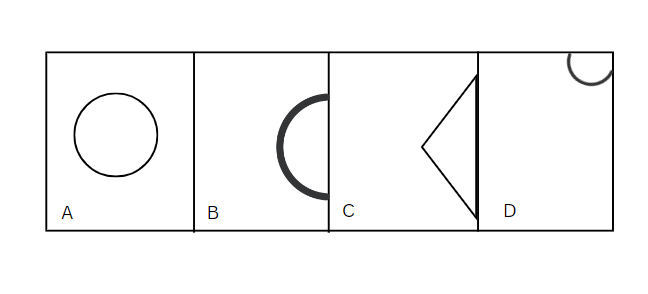
Let's look at these figures and see how they are different. Option A is a full circle, option B is like a half circle, option C is a triangle, and option D is like a quarter of a full circle.
Options A, B and D have round sides, but option C has a pointed side.
Based on this, we can say that option D is the one that doesn't fit with the others, so it is the correct answer.
2. Which of these shapes doesn't belong with the others?
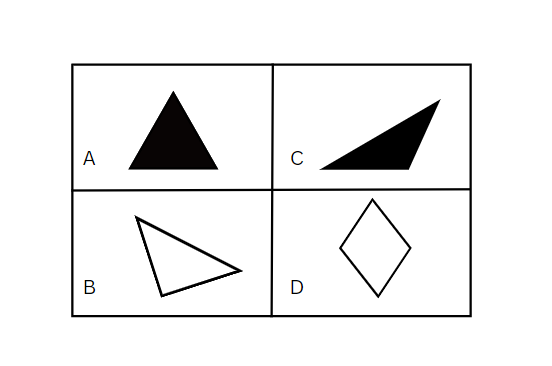
Let's take a closer look at the figures by counting each shape's sides. Both options A, B and C each have three sides, while option D has four sides.
Therefore, option D stands out as the odd one because it's the only shape with four sides.
3. A shape is missing in this series. Which picture from the given choices fits best where the question mark is ?
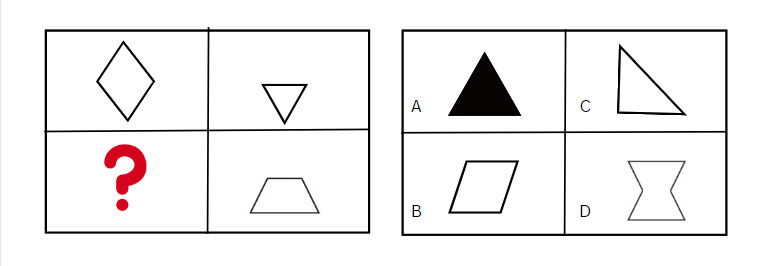
Looking at the figures, it appears that if we duplicate and flip the picture on the right, we get the image on the left.
Among the available options, it looks like Option D fits this pattern, making it the correct answer.
4. A shape is missing in the series. Which of the possible answers fits best where the question mark is?
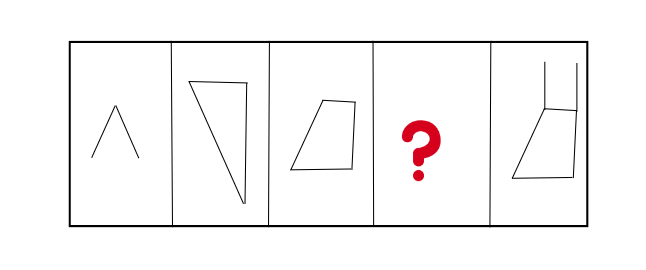
Looking at the pattern, the first shape has two sides, the next one has three and the third one has four. The final shape has six sides. So, the missing shape in this sequence should have five sides.
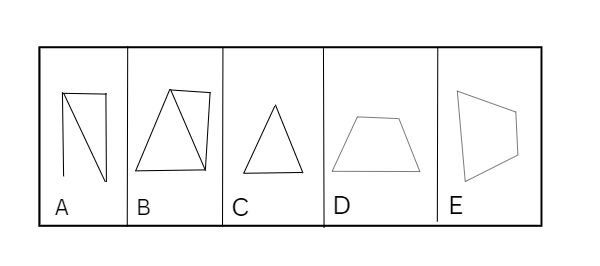
Among the choices given, Option B, which has five sides, is the correct answer.
5. There's an empty spot where one picture is missing. Can you figure out what picture should go in that empty spot to continue the pattern?
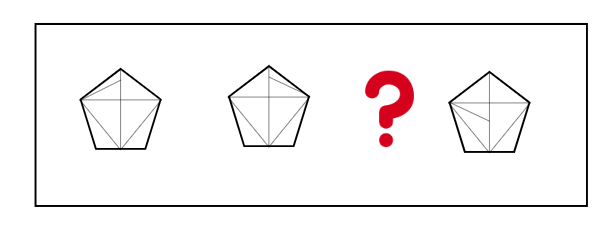
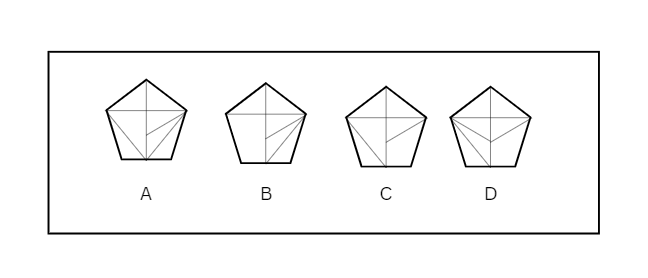
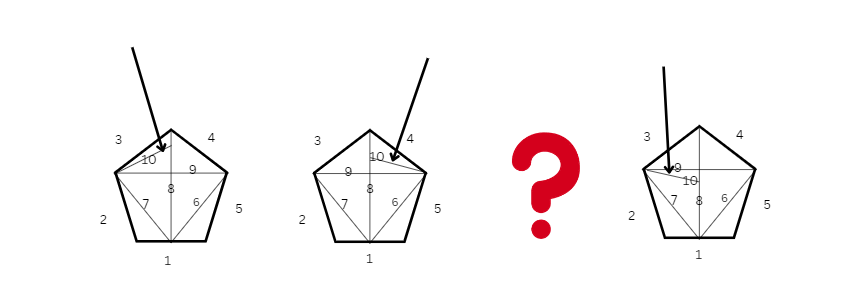
Let's look at the pictures. Each one has 10 sides. Something changes on the 10th side. It looks like it's moving from left to right like the hands on a clock. This should help us guess the missing picture.
Now, let's look at the choices and figure out which one could be the missing picture.
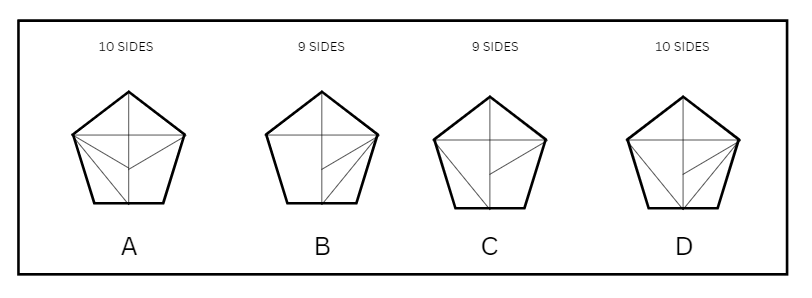
When we count the sides of the choices, only options A and D have 10 sides. Now we can just look at these two to find the right answer.
Which of these options has the same design as the rest of the pictures?
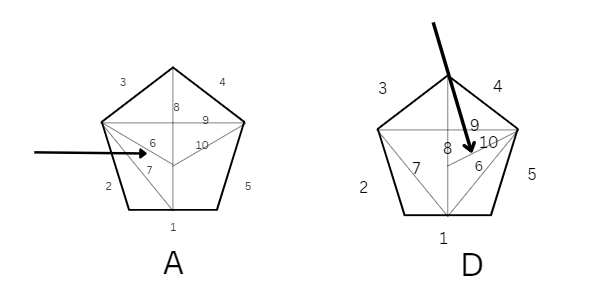
When we look closely at the last two pictures, we notice that picture A doesn't match the others. Even though the 10th side is in the right place, the 6th side isn't. So, after eliminating the ones that don't fit, we can say for sure that picture D is the correct answer.
Colour Patterns in Abstract Reasoning Test
Colour patterns are special parts of abstract reasoning tests. Tests have different colours changing, different shades or patterns inside colours. People taking the tests need to figure out these colourful puzzles to see what's happening underneath.
Colours Appearing and Disappearing: One simple pattern in abstract reasoning is when two colours like black and white take turns showing up. If you're taking a test, try to see when colours change. Then, figure out the rules for why that happens.
Different Shades of Colour: Sometimes, colours change from dark to light or vice versa. You might see something like black, grey, white and then black again. To do well on this test, you need to keep track of how the colours get lighter or darker over time.
Patterns Inside Colour: There can be patterns in the colours themselves too. For example, dots might show up, then go away, then come back. To spot these hidden patterns, you need to pay really close attention to all the tiny details in the colours. It's like breaking secret codes to find the right answer.
To get a clearer picture, let's take a look at some examples below:
1. There's a gap in the sequence where a shape should be. Can you figure out which option would best fill in the space where the question mark is?
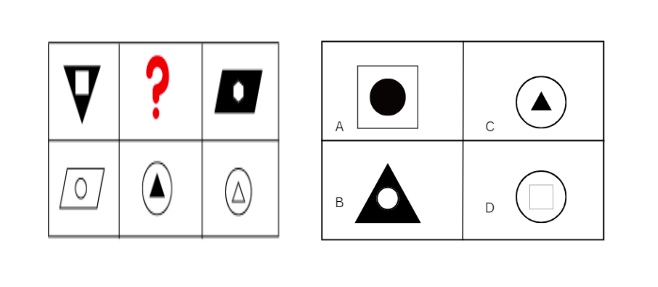
If we check out the series of shapes below, the first one looks like a stretched-out square, which is called a parallelogram. This shape has a white background and has a white circle inside it.
The shape after that is a circle with a black triangle inside it. This also has a white background.
The third shape is just like the second one - a circle with a triangle inside, and it's also set on a white background.
If we look at all these shapes, we can see a pattern, which is, all these shapes have a white background.
Now, if we look at the shapes above, the first one is a triangle with a square inside and it's on a black background. The third shape is like a stretched square, or parallelogram, with an odd-shaped figure (a hexagon) inside, and it's also on a black background.
From this, we can figure out that our missing shape probably needs to have a black background.
After reviewing all the choices, it seems that Option B is the correct one. It appears to be the missing shape in our pattern.
So, the answer is Option B.
2. A missing shape is leaving a gap in the sequence. Can you determine the best option to fill the spot marked by the question mark?
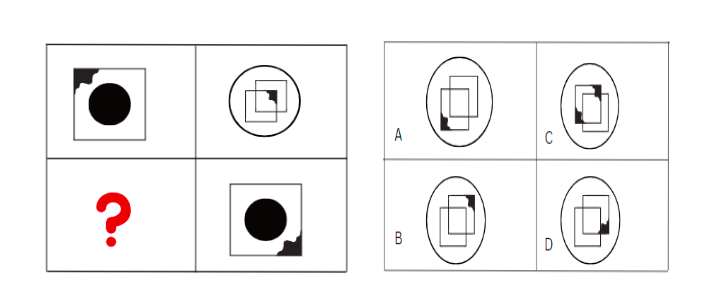
Let's take a look at the sequence. The first shape is a square with a white background and a black circle in the middle. There's also a small bit of black in the top left corner of the square.
The third shape is different - it's a circle with a white background, and there are two squares inside of it. One of these squares has a little black in the top right corner.
The fourth shape is a square again, like the first, with a black circle in the middle and a little black in the bottom right corner.
Looking at these shapes, it looks like the first and fourth ones are kind of opposites - the spots with black coloring are on different corners.
So, considering this, the shape that we're missing should be an opposite of the third shape. This means that it should have a little black coloring but on a different corner.
After examining the choices, it seems that Option A is very similar to Figure 3 in the series. Moreover, the patch of black color is positioned on the opposite side, specifically in the lower left corner.
Hence, the answer is Option A.
3. In the given sequence, one figure is missing. Which option among the answer figures would best fill in the spot where the question mark is placed?
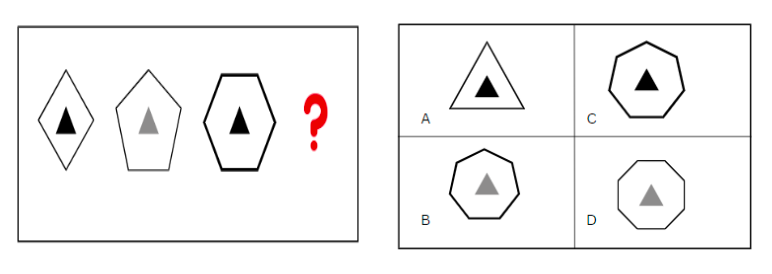
Upon closer analysis of the sequence, we can observe that there are triangles present within each shape. These triangles alternate in color - the first one is black, the second is gray, and the third is black again.
Therefore, the next triangle in the sequence should be gray.
Next, let's examine the shapes themselves by counting their sides. The first shape has four sides, the second has five sides, and the third has six sides. It is likely that the missing piece should have seven sides. Additionally, the triangle within this shape should be gray.
Among the given choices, Option B aligns with the characteristics we have identified.
Final Words
Getting good at abstract reasoning is a vital part of doing well in selective school exams. It might seem hard at first, but with good preparation, practice and a strategic plan, you can do well in this section. Remember, you're not trying to make patterns, but to identify the ones that already exist.
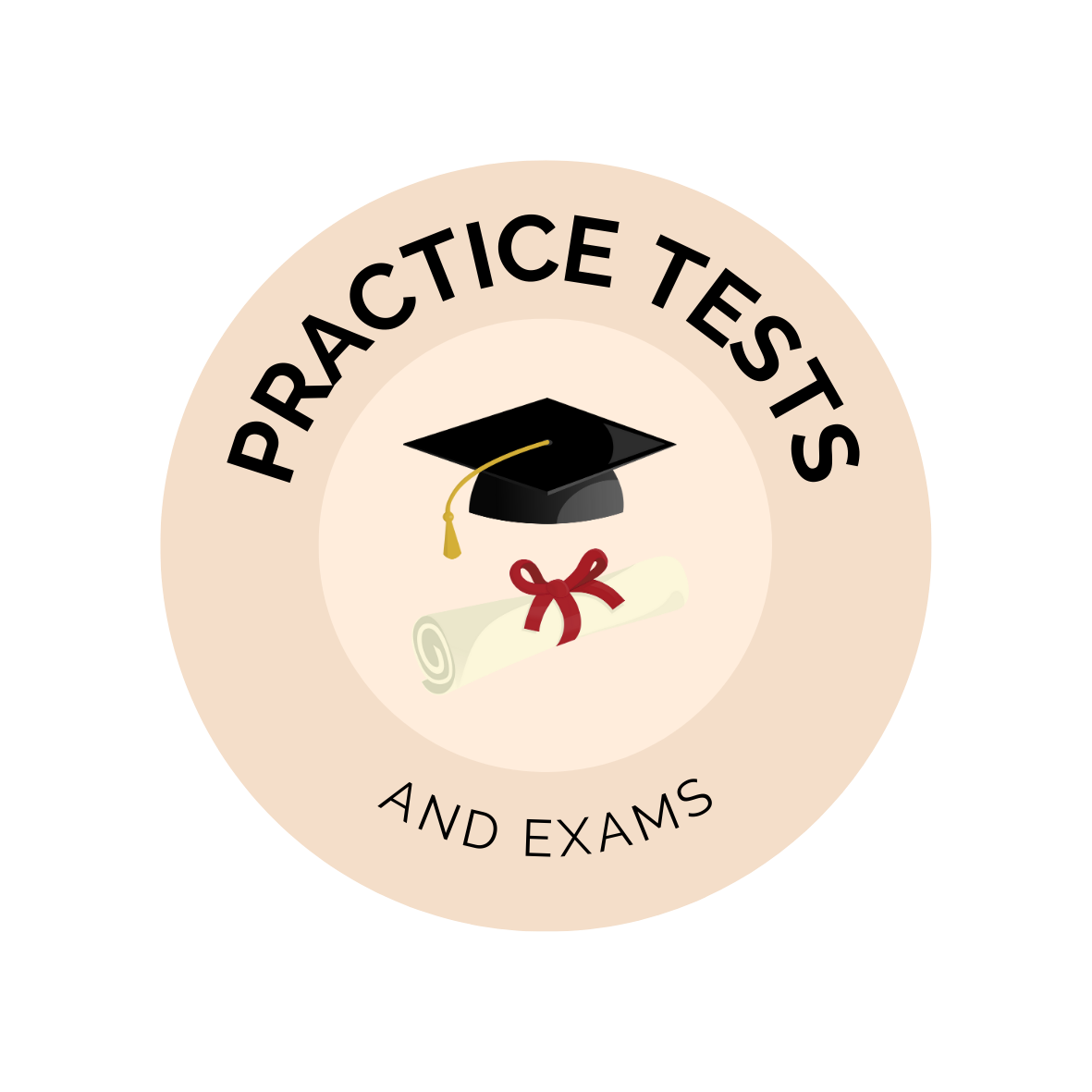

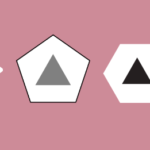
0 comments